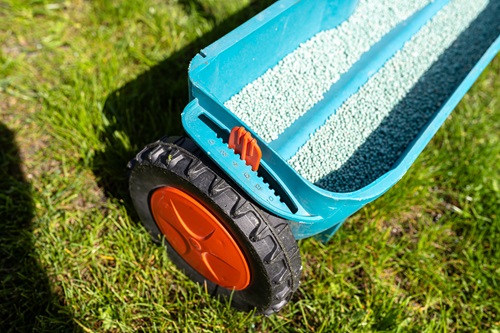In areas that are dry and have limited water resources, lawns are more likely than others to be criticised for their water use. The truth is that most lawns don’t require as much water as homeowners give them. Here are some lawn care tips that will help your lawn thrive in dry conditions and endure droughts.
Lawn Care Tips
Water correctly
Watering correctly is equivalent to watering less when it comes to Conway lawn care. It is essential to remove the lawn’s water addiction and make it more efficient. It is bad practice to water your lawn every morning. This can cause your lawn to need more water each day. Turfgrasses that receive this kind of routine, shallow watering are more likely to develop shallow roots and eventually die. They lose most of the moisture they receive from watering daily. You can gradually train your lawn to reduce the amount of water it receives, and encourage deeper roots to utilize any moisture in the soil. Even grasses that are not water-loving can thrive and survive with less water than they receive during the normal day.
You should water in dry conditions or during drought. It is best to water in the morning, before the sun rises. This evaporates moisture in your landscaping before it can seep into soil. Windy days are also not a good time to water because evaporation can also be faster. A weekly watering under ideal conditions is more effective than a daily shallow watering.
Adapt To Summer heat
Your lawn will be the focal point of family activities in the spring and autumn. Summer heat will require a new approach to yard maintenance and use. This is the best time to reduce foot traffic and cut back on lawn maintenance. Dethatching and aerating must be done in cooler months, not during summer. A higher height of grass will shade the soil and keep the roots cool.
Reduce Stress during Drought
You can train a lawn so it thrives with less water. There are also management methods you can use to help the lawn in drought situations. The most important thing you can do for your lawn is to not go on it. While summer is the best season to reduce foot traffic, it’s possible to eliminate it completely during drought conditions. You can avoid major lawn maintenance during droughts by bringing your pets along for long walks or to the dog park, rather than letting them play on your lawn. Dry, hot weather will make it less necessary to mow your lawn. This will slow down grass growth. It is best to stop mowing during drought conditions, unless absolutely necessary.
You can allow grasses to go dormant in drought. If there are local watering restrictions, make sure you water enough to keep the roots alive. Turf grasses can be left dormant for as long as four weeks without causing permanent damage. If the drought lasts for longer than four weeks, water the turf grass deeply enough to slightly rehydrate it and then wet the soil until it reaches about five inches in depth. This will not cause your grasses or roots to grow greener, but it will keep them alive.
Plant Grasses that are drought-tolerant
There are grass varieties that need minimal watering in both cool and warm season areas. You can reseed or plant a lawn anytime you want. If the grass is not moist enough, you can gradually transform it by top seeding each year with better seeds. Some grass species that are drought-tolerant thrive while others die slowly.
Correctly Mow
Most lawns can be mowed very short. However, in areas with drought or extreme climates, it is important to mow at a higher height. The grass blades hold the most water, so the more time the grass is cut, the more moisture will be available to the roots. Sandy soil drains quickly and makes it more difficult to obtain the moisture you need. You can improve the quality of your lawn by using a mulching mower to mow it or top-dressing the lawn with organic material like compost.
Reduce the Lawn
Many people forget that water is a valuable commodity. It is possible to reduce the area of grass that you have. You can reduce the water needed to sustain grass by adding patios, decks, and courtyards.
Many areas of the country have experienced severe droughts and water shortages. This has led to restrictions, bans and a cultural shift toward conserving water. It is better to reduce the size of your yard if water is scarce. It is okay to keep a lawn if it is needed for pets, kids, or aesthetic reasons. It is important that the area be smaller and easier to maintain.
Look for other groundcovers
The drought-resistant grasses will require more water than any other groundcover species. You should think about converting lawn space to another type of living groundcover if low moisture conditions are permanent and inevitable.
Conner’s Lawn Care can help you with all your lawn maintenance needs.
Conner’s Lawn Care Service
Myrtle Beach, SC
843-504-4901
http://connerslawncare.com/


